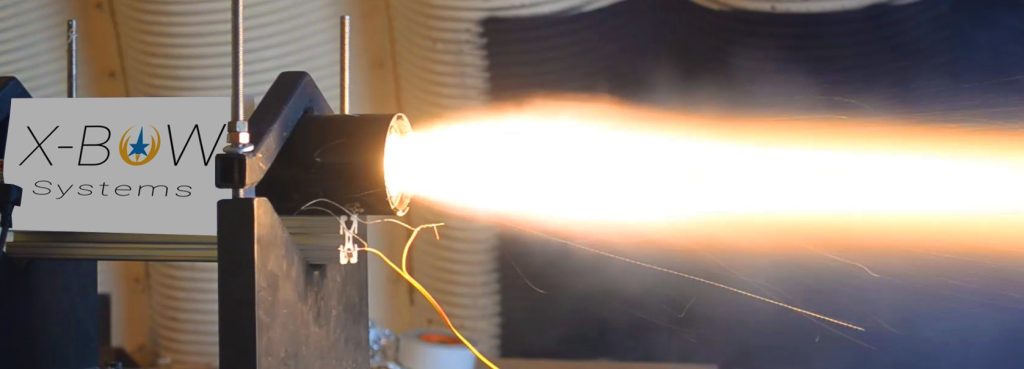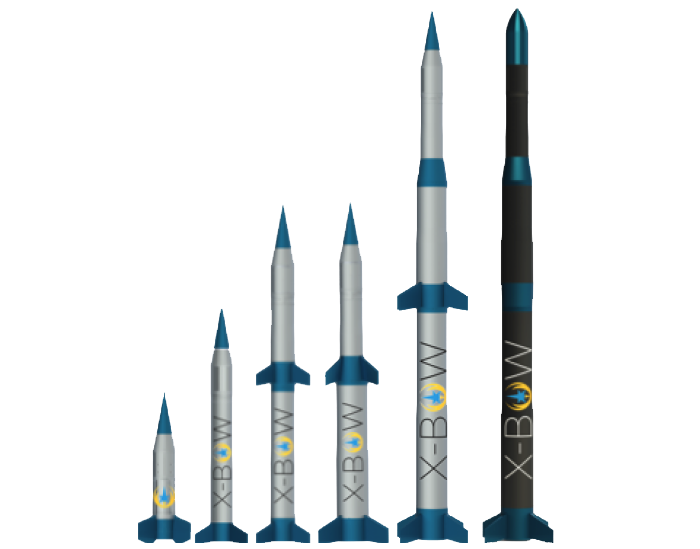X-Bow Launch Systems, a space technology 3D printing company, has exited stealth mode this week.
Originally founded in 2016, the New Mexico-headquartered startup specializes in the development of 3D printed solid fuels and rocket motors and has already created a lineup of small launch vehicles suitable for both orbital and suborbital launches.
Having already secured several contracts with U.S. government organizations, X-Bow’s existing customers include the Air Force Research Lab, AFWERX, Los Alamos National Lab, Sandia National Lab, and the Defense Research Projects Agency (DARPA).
Jason Hundley, CEO of X-Bow, said, “X-Bow is leveraging a unique combination of technologies with an improved manufacturing model to serve existing aerospace markets and enable new ones. Our breakthrough 3D printing technology is positioned to rapidly innovate the solid propulsion and energetics markets just as SpaceX revolutionized the launch market. Our mission is to modernize solid motor production through additive manufacturing while dramatically improving unit economics.”

Solid fuel rocket engines
A solid-fuel rocket, as the name might suggest, is a rocket engine that relies on propellants (fuel and oxidizer) that come in solid form. Since the turn of the 20th century, liquid-propelled rockets have proven to be more efficient and controllable, but solid rockets are often still used for military applications due to their simplicity and robustness.
Unlike their liquid or hybrid counterparts, solid-fuel rockets can be kept in storage for long periods of time without the propellant degrading. As such, they almost always launch reliably but suffer when it comes to fuel efficiency and performance, meaning they’re not the optimal choice for modern medium-to-large launch vehicles. Instead, solid rockets are frequently used as strap-on boosters to increase payload capacity or as light launch vehicles for low Earth orbit (LEO) payloads.

X-Bow’s 3D printed solid rocket motors
Since its inception, X-Bow has focused on designing and 3D printing its own solid rocket motors. The firm claims that its launch vehicles are both more efficient and more cost-effective than traditional rocket engines, reportedly bridging flexibility, reliability, and responsiveness.
Over the past six years, X-Bow has crafted itself an ever-growing product line comprising 3D printed rocket engines, additively manufactured propellants, and end-to-end launch services for a range of government and commercial clients. The company boasts a workforce of over 60, including veteran professionals from the aerospace sector.
“For too long, aerospace markets have lacked a 21st century solution that utilizes cutting edge technological advances such as 3D printing, digital engineering techniques, and automation. X-Bow is well-positioned to fill the gap with disruptive technology that can shake up the emerging space economy,” said Matt Bigge, Partner at Crosslink Capital, a key investor in X-Bow. “We are confident in the experienced team at X-Bow and thrilled to be supporting its mission. This company is poised to revolutionize the future of solid rocket motors.”

The 3D printing of rocket engine components is a venture we’ve seen before, with X-Bow being the latest challenger on the scene. Earlier this year, Chinese start-up SpaceTai announced that its 3D printing technology was capable of slashing rocket production costs by as much as 80%. Although a relatively new arrival in the aerospace sphere, SpaceTai says it can manufacture almost all of its rocket parts using its self-developed 3D printers in order to cut costs.
Elsewhere, private US aerospace firm Launcher recently hit another milestone in the testing of its 3D printed E-2 rocket engine at NASA’s Stennis Space Center. The company successfully completed a thrust chamber assembly hot fire test, following a string of testing achievements for its E-2 rocket engine at Stennis throughout 2021. The E-2 engine is designed to produce 22,000 pounds of thrust at sea level using RP-1, a highly refined form of kerosene, and liquid oxygen as its propellants.
Subscribe to the 3D Printing Industry newsletter for the latest news in additive manufacturing. You can also stay connected by following us on Twitter, liking us on Facebook, and tuning into the 3D Printing Industry YouTube Channel.
Looking for a career in additive manufacturing? Visit 3D Printing Jobs for a selection of roles in the industry.
Featured image shows X-Bow testing one of its solid fuel rocket engines. Photo via X-Bow.


